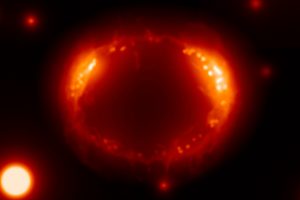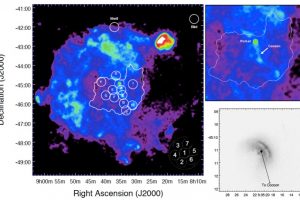A laboratory experiment to test particle acceleration in astrophysical environments. The study: “Laboratory evidence for proton energization by collisionless shock surfing” of W. Yao and J. Fuchs (École Polytechnique, Sorbonne Université) recently appeared on Nature Physics

Energetic particles, called “cosmic rays”, constantly rain down on our planet. Thanks to several years of theoretical studies and observations, we know that these particles can be accelerated by shocks propagating in certain astrophysical environments. The classical example of such environment are the supernovae remnants, which are expanding clouds created by supernova explosions, which are often interacting with surrounding material.
» Read more

